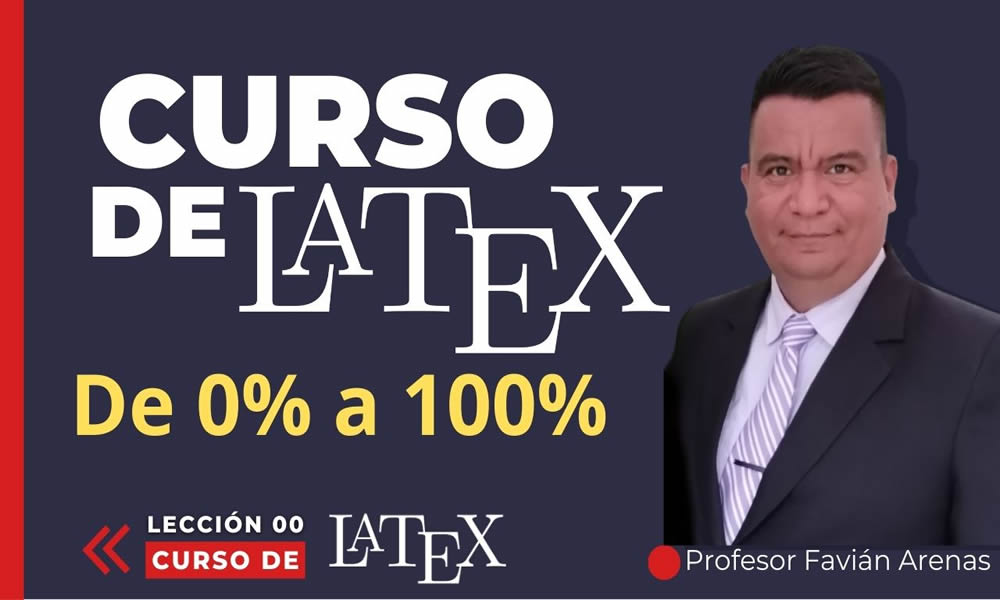
Incluir bibliografía en un documento LaTeX
Mostraré cómo incluir referencias bibliográficas en un documento LaTeX, además de los estilos que se pueden utilizar. Cómo usar Bibtex, con base de datos y sin ellas
\documentclass[12pt]{article}
\title{Ejemplos de bibliografía}
\author{Favian Arenas}
\begin{document}
\maketitle
\section{Introducción}
El problema de complementariedad no lineal \cite{LibroPCNL} surge en diversas aplicaciones como por ejemplo, problemas de contacto mecánico \cite{arenas2018} y fricción, problemas de mecánica estructural y diseño estructural, problemas de lubricación hidrodinámicos \cite{arenas2020}, problemas de equilibrio de tráfico , así como en problemas relacionados con modelos \cite{Andreani2017} de equilibrio económico .
% Orden en que van apareciendo
\bibliographystyle{unsrt}
\bibliography{ejemplo}
\end{document}
ejemplo.bib
@article{arenas2018,
author = {Arenas, F. and Martínez, H and Pérez, R.},
title = {M'{e}todo BFGS estructurado para la estimaci'{o}n de m'{a}xima verosimilitud},
journaltitle = {Revista de Ciencias},
year = {2018},
}
@book{LibroPCNL,
ISBN = {9789585599178},
author = {Pérez, R. and Arenas, F. and Martínez, H. and Arias,C.},
edition = {1},
publisher = {Universidad del Valle},
title = {El problema de complementariedad No lineal: Teoría, aplicaciones y nuevos algoritmos para su solución},
year = {2019}
}
@article{arenas2020,
author = {Arenas, F. and Vivas, H},
title = {Un software interactivo para el entrenamiento de redes neuronales multicapa usando el método secante estructurado},
ISBN = {1692-7257},
pages = {85-90},
journaltitle = {Revista Colombiana De Tecnologías De Avanzada},
year = {2019},
}
@article{Andreani2017,
author = {Andreani, Roberto and Martínez, José Mario and Ramos, Alberto and Silva, Paulo J. S.},
title = {Strict Constraint Qualifications and Sequential Optimality Conditions for Constrained Optimization},
journal = {Mathematics of Operations Research},
volume = {43},
number = {3},
pages = {693-717},
year = {2018},
doi = {10.1287/moor.2017.0879},
URL = {
https://doi.org/10.1287/moor.2017.0879
},
eprint = {
https://doi.org/10.1287/moor.2017.0879
}
,
abstract = { Sequential optimality conditions for constrained optimization are necessarily satisfied by local minimizers, independently of the fulfillment of constraint qualifications. These conditions support the employment of different stopping criteria for practical optimization algorithms. On the other hand, when an appropriate property on the constraints holds at a point that satisfies a sequential optimality condition, such a point also satisfies the Karush-Kuhn-Tucker conditions. Those properties will be called strict constraint qualifications in this paper. As a consequence, for each sequential optimality condition, it is natural to ask for its weakest strict associated constraint qualification. This problem has been solved in a recent paper for the Approximate Karush-Kuhn-Tucker sequential optimality condition. In the present paper, we characterize the weakest strict constraint qualifications associated with other sequential optimality conditions that are useful for defining stopping criteria of algorithms. In addition, we prove all the implications between the new strict constraint qualifications and other (classical or strict) constraint qualifications. }
}
© Profesor Favián Arenas. 2023. Diseñado por HTML Codex
